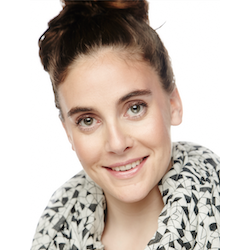
By Josh Baxt
New assistant professor Kristen Vaccaro came to UC San Diego’s Computer Science and Engineering Department from the University of Illinois Urbana-Champaign, where she recently earned her Ph.D. After spending several years in chilly Illinois, she’s pleased to be wintering in San Diego.
“It was very cold,” said Vaccaro, “and very flat. It’s been a pleasure to go hiking again.”
Weather notwithstanding, Vaccaro chose CSE because she was impressed by the faculty and students here.
“It was a virtual visit, which was weird,” she said. “I hadn't been to San Diego before, so I was really coming in blind, but I had so much fun on the visit, talking with everyone. That was 90% of my decision.”
Understanding Social Media
Vaccaro earned her B.A. in physics at Reed College, worked as a software engineer at the MITRE Corporation for several years and circled back to grad school at the University of Illinois. Her research focuses on giving users more say in how social media works.
“My work looks at how we can design machine learning systems to improve user agency and control,” said Vaccaro. “There are increasingly large numbers of decisions that get made about people through automated decision-making systems. How can we take a more human-centered approach when building these systems? How do we give people a sense of agency?”
These can be tricky questions. Sometimes people get too many choices and are simply overwhelmed. Facebook already has more than 100 control settings, but most people don’t know how to effectively use them. In fact, Vaccaro’s research has identified a kind of control setting placebo effect, which she likens to the Close Door button on an elevator. Nobody has any idea what it does – if anything.
“We did one study where we gave people control setting access for their newsfeeds,” she said. “Sometimes the control settings worked properly, but in some cases we also coded them to malfunction. People were just as satisfied with the malfunctioning settings as the functioning ones.”
Vaccaro and others have also identified a variety of social media folk theories – which can lead to odd tricks people adopt to customize their feeds. Some people like a post and subsequently hide it. They want to show their friend some love; however, they don’t want the algorithm to show them similar posts.
Does liking and hiding work? Nobody really knows. Outside of Facebook, there’s no way to run a controlled experiment where people can change their news feed on one screen and leave the other alone. However, understanding these folk theories can offer new design insights.
“The control settings are there,” said Vaccaro. “People care about them, but they don't know where they are, and they can't tell whether they're working. Maybe we can take the more natural ways people have of thinking about a platform and leverage those to curate control settings, be their virtual valet.”
Vaccaro also wonders if current design is too seamless, hiding what’s really going on under the hood. She thinks a more “seamful” approach, in which people can see problems in real time and react appropriately, might be more helpful. She compares it to hearing an unnerving rattle in your car.
In addition, Vaccaro wants to help people understand their privacy choices and improve their experience when they disagree with a platform. “How can you design content moderation systems so that people have a say in how their community is governed?” she asks.
Teaching and Learning
Vaccaro likes to incorporate student-driven elements into her courses. It engages her classes and sometimes offers unique topics. During one fall quarter class, she let students to pick 10% of the topics.
“Some of the student choices were things I would've picked already, like AR/VR,” she said. “Others were things I absolutely would not have chosen myself. The students wanted to talk about depression and stress and how that connects to social media. I would never, in a million years, have picked that topic. But the students were interested, and it led to a great discussion.”
Outside the classroom, she has been exploring San Diego, particularly the excellent hiking. “I go out weekdays, early in the morning, so there’s less traffic – Torrey Pines, Peñasquitos, Cowles Mountain. I have two books on San Diego area hikes, and I hope to do them all.”

